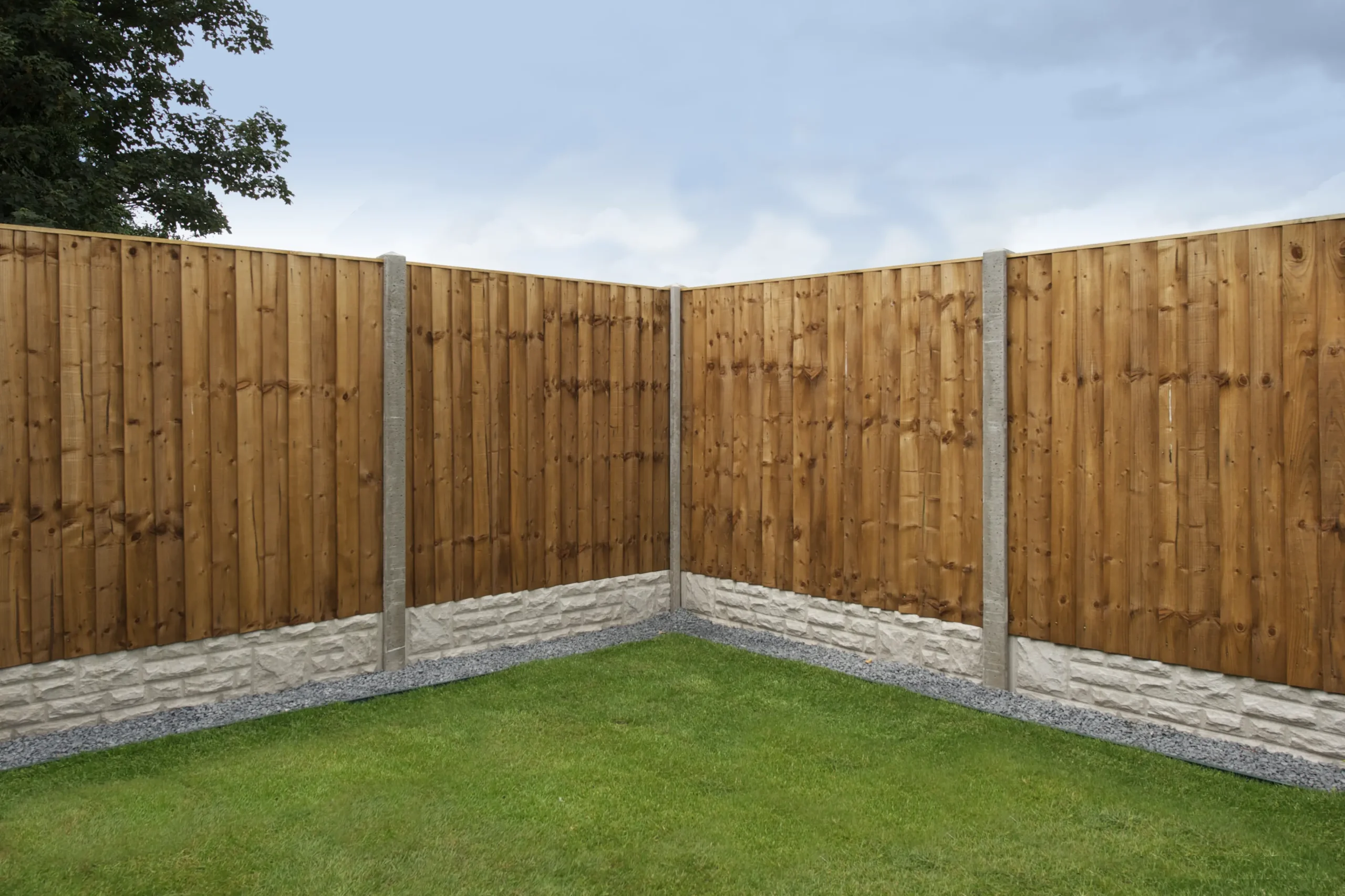A beautiful fence may transform your garden, but installing it incorrectly could make you seriously regret trying your hand at some fence DIY. Here at eDecks, we’re huge fans of saving money and doing things yourself, which is why we put together this list of top tips to make sure you get a fence that looks like it was installed by a pro and that you don’t end up running into any costly mistakes.
Check if you need planning permission
First things first; before doing any work you need to check that you have the right permissions to build the fence you want. In the UK there are rules for fencing on your property – for example, if you’re planning on putting your fence next to a highway or a footpath, you can only have a fence up to a maximum of one metre in height without planning permission. If your fence isn’t next to a footpath or highway, you can have a fence up to two metres high without planning permission.
You can find out more information right here, so don’t panic. If you have any concerns, or you’d like to build a bigger fence, you can always contact your local planning office with any queries before you start work.
Check your property boundaries
A big mistake, and stressful nightmare, is finding out that you’ve built your fence on your neighbours land. Not only will it cause a great strain on your relationship with the neighbours, but it can also mean installing your fence twice AND paying for any repairs needed on your neighbours land.
It shouldn’t take too long to ensure you don’t make this mistake, however. Simply check your property title deeds to find your boundaries. If you want to go the extra mile, it’s also a good idea to pop over to your neighbours and let them know of your plans as a courtesy.
If you don’t have your property title deeds on hand, you can also perform a quick check online here.
Too many posts is better than not enough
Another mistake DIY fence builders make is spacing out their posts too far. A good rule of thumb is to never place your posts more than 8 feet apart. The reason you don’t want your posts too spaced out is simply for support – having a fence too widely spaced out can make it vulnerable to the elements and more likely to blow over in strong winds.
Avoid the cost of reinstalling a blown over fence (and any damage it might make to your property during a storm!) and ensure you place your posts at a maximum of 8 feet apart.
If you’re buying fence panels, you should be able to easily measure the area you’d like to fence and get the precise number of posts you’ll need from your calculations.
Plan your fence well
The best way to avoid buying too much fencing (or not enough) is to measure out the areas you want to fence properly from the beginning. The easiest method is to use some string and stakes to mark out the areas you’ll be fencing. Ensuring the string is taught, you can then measure the entire length of the fencing you will need.
The great thing about measuring properly from the beginning is that you should avoid overspending on materials AND you can even opt to buy a made to measure fence product, which makes DIY installation even simpler.
Dig deep for a more resilient fence
Another common mistake that DIYers run into is not installing their fence posts deep enough. The problem again is that if your fence posts aren’t deep into the ground, they can be more easily blown over during bad weather.
Fence posts should be a minimum of 2 feet below ground level, but it can vary with the height of your fence. If you’re unsure how deep you should set your post, a good rule of thumb is to place one-third of your fence post underground.
Go the extra mile if you’re using concrete
If you’re installing your fence posts with concrete, you’ll find some people recommend a DIY tip of pouring dry concrete in your hole first, placing your post in the dry concrete, then watering the concrete to let it set.
Sounds simple, and it is.
However, using this method actually causes the concrete to not set as strongly as premixing concrete prior to pouring it into the hole. This means that your fence simply won’t be as strong and won’t last as long as if you had gone the extra mile and premixed the concrete before putting it in your hole.
Be wary – not all tips are good for your fence!
Get galvanised nails to avoid staining
When you’re planning your fence, you should make sure to get all the right materials – including the right nails. If you don’t use galvanised nails, which are treated specially for the outdoors, your nails will rust much more quickly.
Rusty nails don’t just shorten the lifespan of your fence – they also cause hideous staining on your brand new wood!
Don’t just use any old wood
Speaking of materials, be careful to make sure you build your fence with the right material. Don’t make the mistake of using any old wood – your fence needs to withstand many outdoor conditions over the years, from pouring rain to red hot sunshine and even frost.
To avoid your wood warping and rotting, you’ll need to choose either a wood that has been treated for outdoor use, ready made fence panels or a composite fence panel. These should all guard against the elements and ensure your fence looks great for years to come.
Face your fence the right way
This one is a common rookie mistake – building your fence the wrong way around. Although you may think you would prefer to see the nice side of your fence from your window, it’s better practice to face the fence posts, rails and pickets towards your home.
Not only will the neighbours prefer it, but that way your home has much more ‘curb appeal’ for any future sales.
Be brave – you can do it. And you can always get free advice.
Lastly, don’t be put off fence DIY. It’s one of the simplest upgrades you can make to your garden space and can look terrific. Follow these tips and you’ll be sure to get a great result.
Remember, if you’re ever stuck or worried about how to install a fence properly (or if you have any other fencing queries) you can always get in touch with the experts at eDecks who offer completely free advice. Not only that, you can access free installation guides to help make sure you get it right first time.
If you have any friends who might benefit from our tips, please share this article with them. And lastly, if you’re looking for great fencing at a hugely discounted price, remember at eDecks you can not only expect a good deal but also:
Super fast FREE delivery on orders over £100*
48 Hour delivery on many products
Handy FREE installation guides (and even instructional videos!)
Incredible prices on all of our fencing materials (and frequent big discounts!)
*Free delivery applies to most of the UK, but some areas may incur a charge, unfortunately – please check the eDecks website for more details.


Thanks for Sharing really an inspiring article, i can use some these tips in my next DIY fencing work.
Thanks for the tips! You saved me a lot of money.
This is a great post! We have seen a lot of errors on fence installations over the year. You really hit the nail on the head with a lot of these items mentioned! We have seen a few fences where they have put the finished side facing inward. It’s really an eye sore from the street view, that is for sure! Good article. Thanks for sharing!
We’re planning on having our fence DIYed, Can’t afford laborers or professionals now. I have the time so why not! Thanks for sharing this, finally can start somewhere!
Very useful article and includes many tips which we also utilise in our own business. Thanks for taking the time to share it.